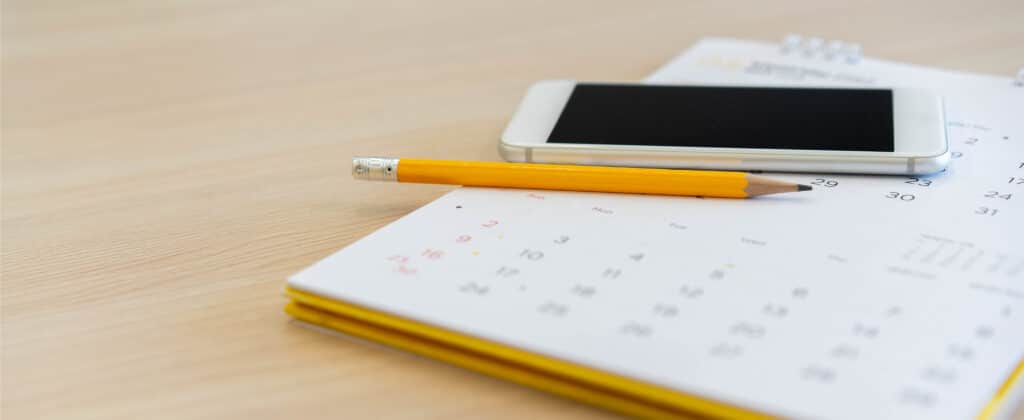Do you ever get that zoning-out feeling during your video calls? You’re not alone. In this modern world, it can seem like most of our days are spent staring at a video stream after video stream. If that weren’t enough, a lot of events that used to take place in person are now transitioning online. This means you’ll likely have video calls and webinars frequently, meaning even more time staring at your screen. While many of us wish we could avoid joining video calls and presentations altogether, this new way of conducting business is likely here to stay.
Many articles on this topic cover how webinar hosts can proactively plan events in a way that combat fatigue. But what if you’re the participant? Are there still ways to alleviate your webinar fatigue if you don’t have control over the event? Our answer is simple, yes with just a few simple tips. Follow the four tips below and hopefully, you’ll find a way to combat fatigue on your next webinar!
#1: Review the Agenda and Plan Ahead

Let’s start off simple, read over the agenda and schedule. The easiest way to combat webinar fatigue is to fully know what to expect.
The first thing to ask is, are you prepared and understand the topic? You’ll likely be more engaged if you find the discussion interesting and understandable. Prepare ahead by reading any materials that were shared with you. You can even go one step further and research the individual presenters to understand their background. The background on the presenters will give you perspective on what they will be discussing and their point-of-view on the subject. Your research might even help you come up with inspiring questions for your presenters. You’ll be less fatigued if you’re involving yourself in the presentation.
Secondly, you should ask yourself a few additional questions. Will there be interactive sessions? Do you have breaks? How many other participants will be on the call?
All of these are important questions to answer before you join the webinar. You’ll be better able to come up with solutions to fatigue if you understand when it will set in. You’ll plan differently if you have a 3-hour webinar versus a virtual event with a jam-packed agenda.
#2: Prepare your Comforts
There are many perks to taking a webinar from your home office. Being in your own space allows you to take control of your environment. If you’ve read our previous blog on how to prepare your home office, you hopefully have the obvious; a comfortable chair, a spacious desk, a Webaround, and privacy. On a regular workday, these simple comforts might be enough. But, when you’re about to face a relentless stream of online presentations, it might be time to bring in the big guns, metaphorically speaking.
If you’ve followed Key #1, you already know how your webinar will be structured. Think about the breaks (hopefully your webinar host has planned breaks) and how to make sure you have what you need when you need it. For example, if you know you need 2 cups of coffee to last through a 3-hour presentation, go ahead and prepare those ahead of time. Might as well bring yourself a soda and a cup of water, just in case.
#3: Distractions are Good

I know this might seem counterintuitive but distractions are a good thing! Let’s face it, in this world with countless opportunities for multi-tasking, our brains are wired to seek out multiple stimuli. Now, let me be clear, there are both good and bad distractions. I discourage you from scrolling through social media all day while on a webinar. Instead, think about distractions that allow you to still give your attention to the presenter.
For example, I am a huge fan of sensory toys and fidget spinners. Fidget spinners are toy-like devices that spin on a ball bearing. This and other sensory toys help keep your hands busy while allowing your auditory and visual sensors to focus on a presentation.
In addition to distracting yourself while on a webinar, you can also help combat webinar fatigue by distracting yourself during breaks. Many people stay in their chairs and continue working during the brief breaks offers during virtual events. It’s a hard habit to break but one I suggest quitting immediately. Rather than staying in place, get up and do something completely unrelated to the task at hand. Healthy options can include stretching, meditation, grabbing a glass of water, etc. If those don’t sound like the right things for you, you can also watch a short video, scroll through TikTok, anything that gives your mind some stimulus that isn’t webinar-related.
#4: Pick the Right Webinars

As I mentioned before, you’re likely to feel less fatigue the more interested you are in the subject matter of the webinar. There will be times where you’ll have to attend a webinar you don’t feel very connected to. But that’s okay. Try to balance this out by attending other webinars that do pique your interest. This is especially true if you’re attending multiple sessions in one day.
If you’ve done your preparation ahead of the webinars, you will have a better idea of which sessions you’ll ultimately enjoy more. Try to find a balance between things that will help you professionally, and things that interest you personally.
You’re Ready for Success
By adequately preparing, preparing your space, using positive distractions, and selecting the right webinars, you’re setting yourself up for webinar success. These few steps can make a dull presentation a more enjoyable experience. With these tips, you’ll be able to focus and participate in your next webinar! But, don’t be too hard on yourself if you find yourself daydreaming during a virtual conference, it’s hard to be engaged for that long! Just do what you can, prepare ahead of time, and make sure you’re using the fact that you work from home to your advantage. Make yourself comfortable and enjoy the show!



